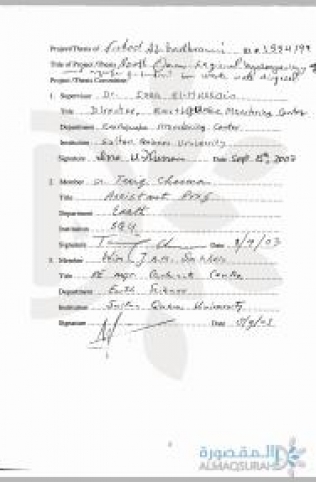
North Oman is bounded by the Oman Mountains to the north and Umm as Sammim Subkha plain to the west. This area hosts many of the oil wells of the Sultanate, which produce large volumes of waste water. At present, waste water is either injected back to the producing reservoir to enhance oil recovery and/or disposed in the shallow highly saline aquifers of Tertiary and Cretaceous ages. Due to the fact that the oil fields of northern Oman are becoming more and more mature, an increase in the volume of waste water is anticipated. This requires an in-depth study of the hydrogeological parameters of the aquifers of northern Oman. The objectives of this study are to evaluate the aquifer parameters of the Tertiary formations, confirm water flow direction and understand the aquifers hydrogeochemistry, suggest the best available formations for disposing waste water and to lay down the criteria for underground waste water disposal in northern Oman. Large database present at the Petroleum Development Oman (PDO) were reviewed. This included periodic water level measurements, pumping tests and hydrogeochemical (temperature, salinity, density, hardness). Driller's logs were also used to get all possible information relevant to the project. These data were used to draw the hydro-stratigraphic succession of the area .. Based on the water level and potentiometric data, ground water salinity and topography, ground water flow directions were plotted for Fars and Umm er Radhuma (UeR) aquifers. Ground water flow direction indicates a general SW trend where the Umm as Sammim plain acts as a regional basin. Shallow formations such as Dammam and Rus are regarded as aquitards while the UeR is recognized to have a good potential to serve as a ground water resource for the area. However, the UeR water as well as the other shallow aquifers are hypersaline in most of the areas. Fars has a fair transmissivity but it lacks a capping impermeable layer at the top. UeR has significant pore volume because of the presence of karst and fractures and capped with the impermeable Rus Anhydrites. It has very high salinity and lower injection pressure which make it a good receptor for the waste water produced in the oilfields of northern Oman
North Oman is bounded by the Oman Mountains to the north and Umm as Sammim Subkha plain to the west. This area hosts many of the oil wells of the Sultanate, which produce large volumes of waste water. At present, waste water is either injected back to the producing reservoir to enhance oil recovery ...